Creating content can feel like a wild goose chase if you don’t have a strategic content calendar. If you find yourself flying by the seat of your pants on a weekly basis, it’s time for you to find a system for creating content that actually works. For starters, putting a post together at the last minute is a stressful experience. On a deeper level, that same post might not perform well since the creation process was rushed. If you’re tired of creating last-minute content and you’re ready to create mindful, strategic, high-quality content — you’re in the right place. Here is a step-by-step guide on how to create a strategic content calendar that’ll make the process stress-free.

How to Create a Strategic Content Calendar
I produce several pieces of content for multiple platforms on a weekly basis. Between my blog, Instagram, Facebook, podcast, and email list, publishing content on the spot is impossible. Moreover, staying consistent with your content is important to the growth of your business. I know how challenging it can be to create strategic and consistent content, so if you’re struggling — I feel your pain. And if you’re completely over the struggle, I’m about to put an end to those “Oh shoot, I don’t know what to post!” moments. Are you ready?
Establish Your Content Pillars
The first thing you want to do is establish your content pillars. Your content pillars are the 3 to 5 topics you discuss or share most about online. For example, if you’re a health coach, your content pillars might include nutrition, workouts, and mindset. Establishing your content pillars are so important for multiple reasons. First of all, it’ll help you gain absolute clarity on your niche if you haven’t done so already. Your niche will help you establish your authority in the space, while your content pillars will identify the specific topics you’re an expert in. The more focused you are, the easier it is for you to grow. Your content pillars will also make mapping your content calendar so much easier; so it’s crucial that you establish them before moving on.
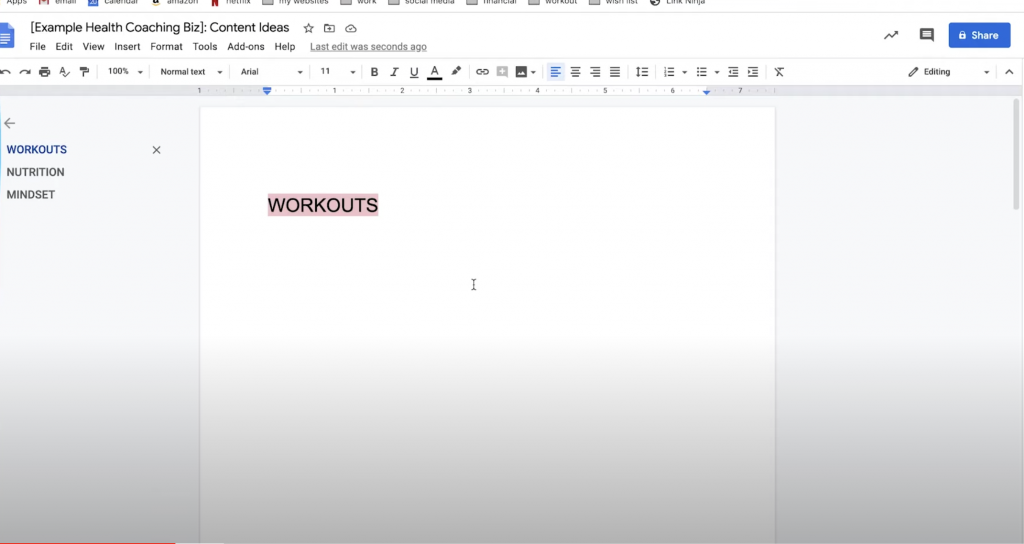
Create a Document With Separate Pages For Each Pillar
Once you’ve established your content pillars, the next thing you’ll want to do is create a Google Doc with a page dedicated to each pillar. This document will be an ever-growing, ever-evolving list of ideas that you’ll refer to whenever you are in content creation mode. For that reason, I highly recommend creating this list on Google Docs or at least keeping a digital copy of it if you decide to use a physical notebook. This way, you’ll be able to maintain this ongoing list without running out of room for ideas, or losing the document.
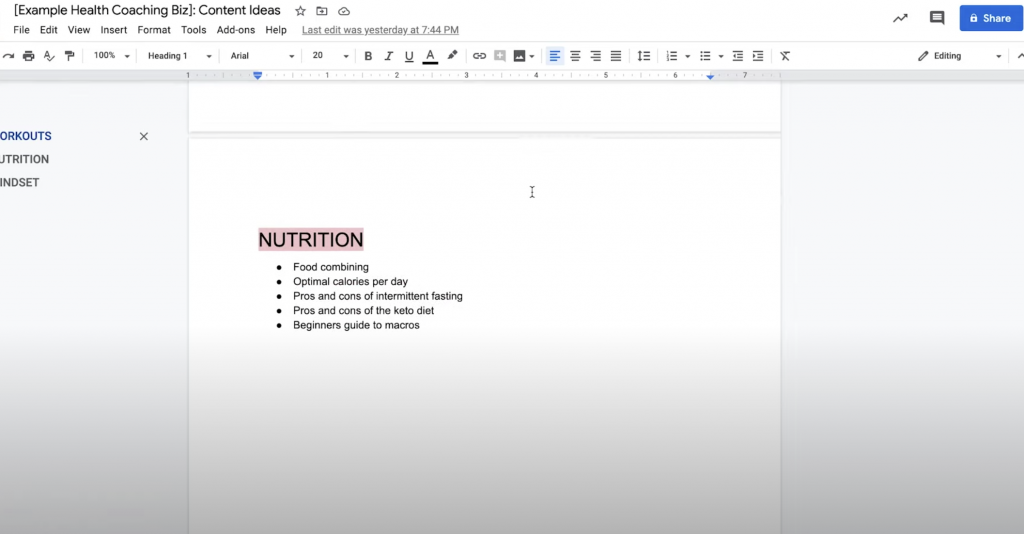
Source Ideas and Brain Dump On Your Document
One of the most important steps of this process is to brain dump all your ideas onto the document you’ve created. Personally, I set aside time each month to add all my ideas to this document. Whether they’re your own organic ideas or ideas sourced from a trend you’ve seen, this list will keep them all organized by the appropriate content pillars. And if you’re stuck and don’t have any ideas, here are 3 places you need to look to in order to fill this document up with strategic ideas that serve both your growth and your audience.
Step 1: Your Analytics
Before you sit down to fill out your document, refer back to your analytics for the previous month. This could be your analytics for Instagram, your blog, podcast, or any platform you’re on. Your analytics will help you determine the best performing post. These posts indicate how well your audience resonated with that specific type of content. When looking at your analytics, take note of the details of your post that got people engaged. Ask yourself — what did you write in your caption, and what type of image did you post?

For example, this post of mine received a few thousand saves. This tells me that my audience finds this broken down mini itinerary helpful. I will then note in my document that these mini itinerary captions are a great idea. This way, I’ll know that I can use this same caption format for different locations in my future content. Additionally, I can also conclude that my audience is interested in Tulum. Knowing this, I could slate more Tulum-focused content into my content calendar.
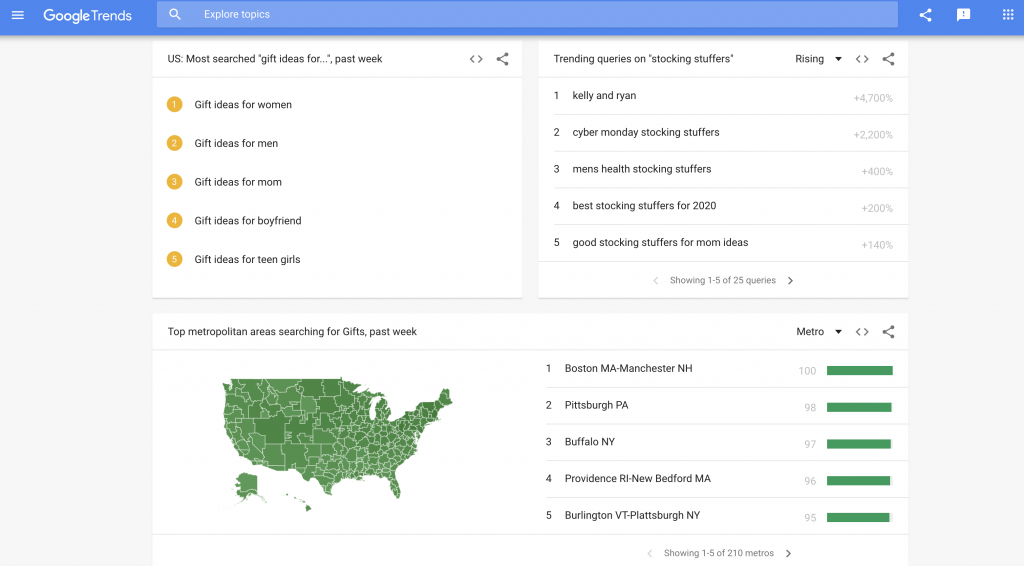
Step 2: Observe Industry Launches, Trends, and News
Take a look at the latest launches, trends, and news within your niche. If you’re a travel influencer or blogger, a post about how to travel safely during the pandemic will be helpful and relevant to your audience. Similarly, gift guides around Black Friday and the holidays are always timely. Or if you’re in the health and nutrition space, creating healthy holiday recipes would be great in the months of November through December.
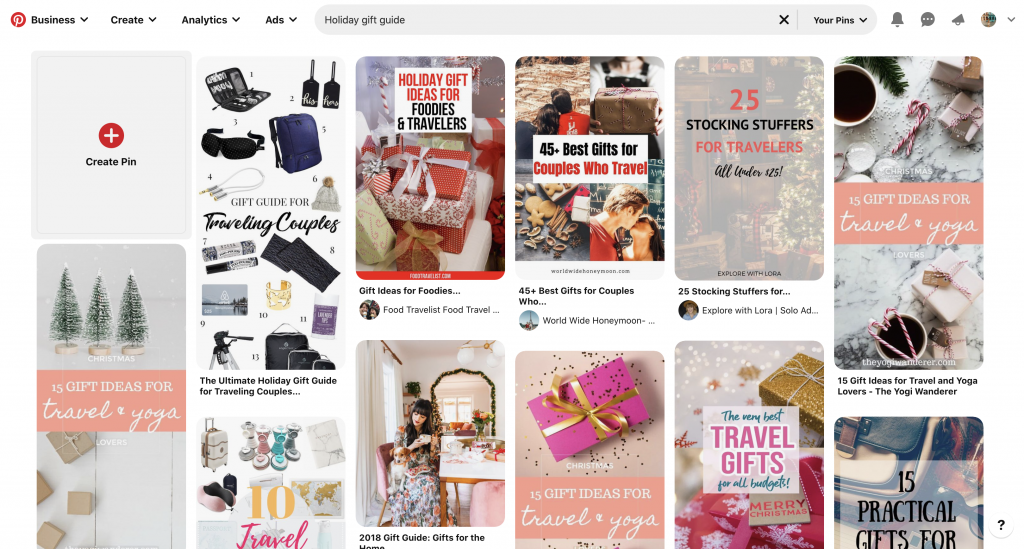
You can also turn to Google Trends or Pinterest to search for topics that are currently relevant. You can simply plug-in a specific keyword into Google Trends to determine the relevance and popularity of a search on Google. As for Pinterest, begin by plugging your keyword into the search bar. This will pull up the best-performing Pins (aside from ads) on the platform at the very top. These results are a great indicator of what types of posts people are interested in.
Step 3: Listen to Your Audience
The most important way to source content ideas is through your audience. Take note of all the requests you receive. Pay attention to any questions your audience sends you through DMs or your comments section. Can you create content that’ll address those topics? You can even use Instagram stories to poll and ask them about the type of content they’ll like to see. Remember, the relationship you have with your audience should be a reciprocal one. This means you can’t just create what you want to for your audience, but you need to listen to what they want and create content that serves them.
Planning and Creating Your Strategic Content Calendar
By this step, your inspiration document should contain a number of topics under each content pillar. Now it’s time to fill out and plan your strategic content calendar using a paper planner, or a project management tool like Asana or Trello. I personally use ClickUp because it allows me to tag each event with the appropriate label, which I have set according to the platform.
I like to plan a month ahead at the beginning of each month. However, you can plan your content calendar every quarter if you’re ambitious. Whatever you do, I do not recommend planning your content on a week-by-week basis, since this isn’t enough time to plan and execute high-quality content.
Generally, you should plan far enough in advance so that you’ll have a good overview of your workload. Planning ahead will allow you to prepare your content well in advance, giving you enough time to deliver quality consistently. If you’re ready to plug-in your content into a calendar, here are 3 easy-to-follow steps that’ll make sure every piece of content has a due date and timeline.

Step 1: Plug-In Important Days
Start by plugging in the most important days of the month. This could be holidays, launch days, maybe even the day a press feature or podcast interview is published. Getting these dates in first will allow you to see what additional pieces of content you’ll need to support and promote these important events.
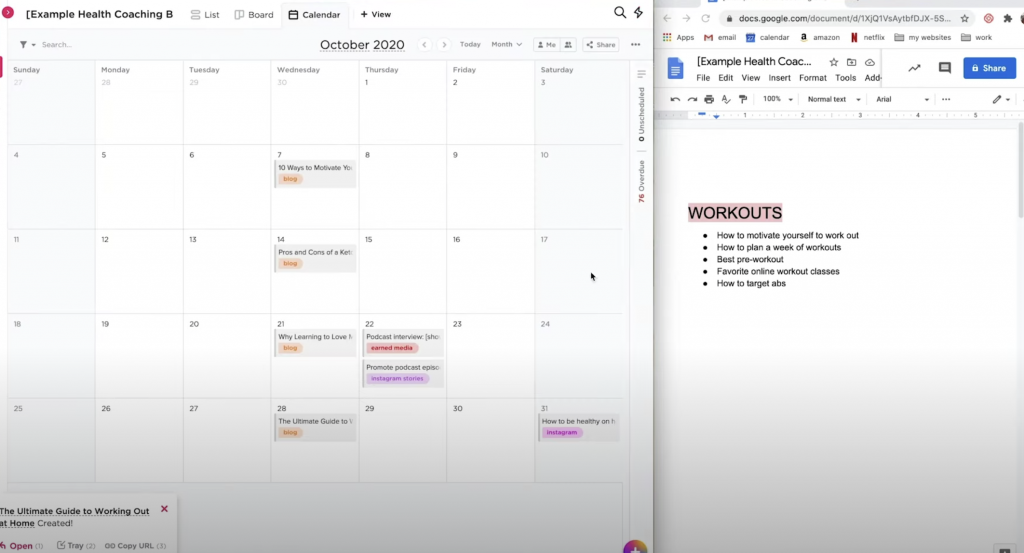
Step 2: Slate in Macro-Content
Your macro-content is the larger pieces of content that require more preparation and time for creation. These are your blog posts, YouTube videos, or podcast episodes (if you have your own podcast). One piece of macro-content can also be broken down into several pieces of micro-content.
Typically, you’ll want to be posting your macro-content at least once a week. Additionally, they need to be published on the same day every week, so your audience will know when to expect them.
To plug in your macro-content, refer back to your inspiration document. It’s important to rotate between content pillars every single week. This will allow your blog, podcast, or YouTube channel to be more well-rounded, instead of focusing too much on a specific pillar throughout the month. And of course, be sure to cross off the ideas you have plugged into your calendar so you do not accidentally repeat them in the future.
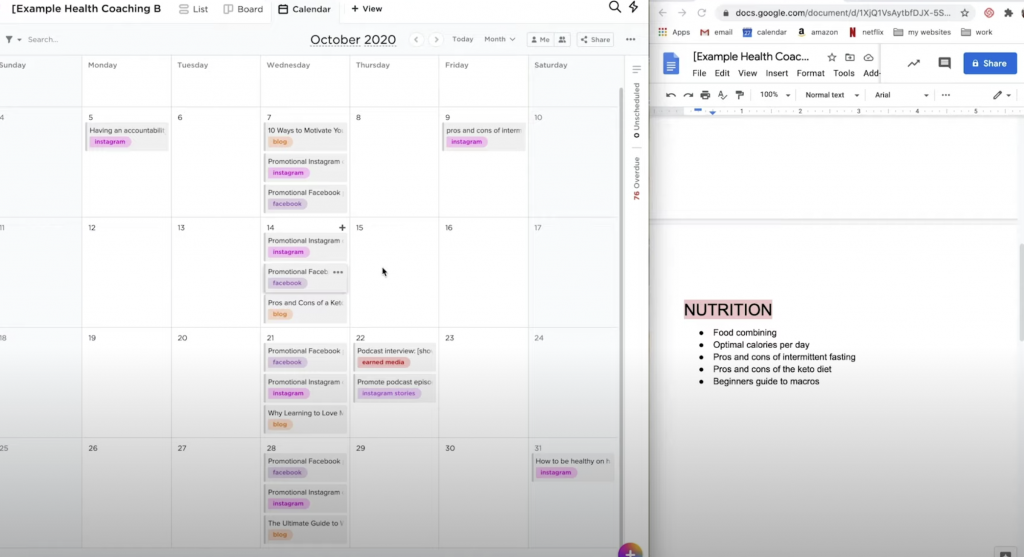
Step 3: Fill in Micro-Content
Last but not least, you’ll want to fill your calendar with micro-content. Think about micro-content as bite-sized pieces of content that require less time to create. These are your Instagram posts, Reels, or TikTok videos. Your micro-content can promote and support their macro counterparts, or they can be stand-alone posts that serve extra bite-sized value to your audience. As you can see from the photo above, your micro-content will be posted more frequently throughout the month. Keep in mind that micro-content can also be published spontaneously. For instance, if you feel like posting a quick photo with a short caption, go right on ahead! Even if it isn’t previously scheduled on your content calendar.
Get a Head Start on Your Content
Creating content requires a lot of moving parts. Without a content calendar, you will find yourself scrambling to push content out at the very last minute. Stop hitting “publish” just because you have to, and start strategizing your content to work for both you and your audience. Strategic and valuable content is at the heart of every great community, and your content calendar will make sure you’re on the right track. To be honest, it wasn’t until I started implementing the strategies outlined in this post that I began to create more meaningful, strategic, and high-quality content with ease. And best of all, I’m able to serve and deliver exactly what my audience finds valuable and helpful. Use these steps to get a head start on your content for the new year. And in no time, you’ll be creating content across all your platforms like a pro.




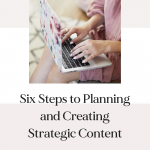


I loved this post! As a beginner I found it very informative and helpful 💕 Thank you!
This is so helpful! Thank you for the great tips!
Hi Christina! Thank you for the sharp steps! I just filled out my 3 pillars and ready to research my next steps. I agree with you that it is crucial to plan all activities in advance, so it will give me peace of mind and I can save my energy for creating posts instead of stressing out what to post. Thank you again! Anna.
This is so great! I also listened to you via a video on Later, as well. Super helpful! My question: As a yet to be launched fashion brand…how would you tweak some of these ideas to prepare for a launch? Also: When you plugged in micro-content in your examples, you made some topics IG captions. Some of the topics seem like they would be hard to cover in just an IG post? Any insight is appreciated!